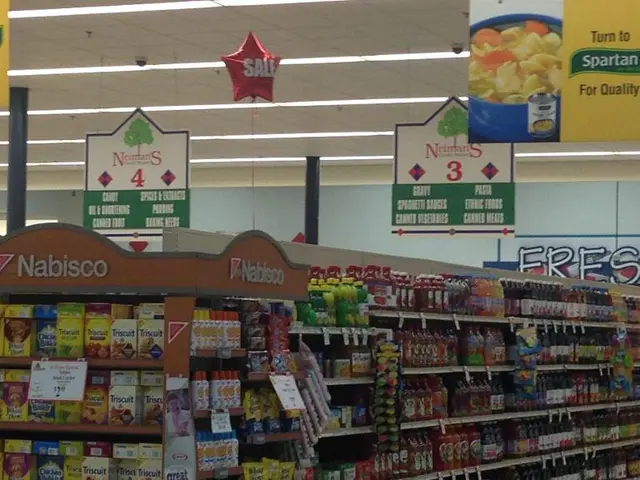Identify Soil Issues Quickly - Discover prompt solutions to address them efficiently
Gardens rely on soil to grow, but it doesn't always shout out when it's in trouble. Many gardeners struggle with droopy plants, sickly growth, or drainage problems, all without realizing the root (pun intended) cause is the dirt beneath their feet. Spotting issues early can save your plants and boost your garden yield. Here are 25 red flags that your soil isn't up to the task, along with easy, green solutions to turn things around.
Problems galore
- Hard and Compacted Soil: This happens when the soil lacks airflow and drainage, often in areas with heavy foot traffic or repeated tilling. Roots find it hard to spread in such soil, making it difficult for plants to absorb water and nutrients. Use a garden fork or core aerator to loosen up the soil, and sprinkle some organic matter like compost for an extra boost.
- Slow or No Drainage: If water collects after rain or watering, it means your soil doesn't drain well, which can lead to root rot. Mix in coarse sand or organic materials like dried bark or compost to improve drainage. Raised beds and mounded rows can help with excess water, too.
- Constantly Wilted Plants: Plants can wilt without being thirsty, especially if the roots aren't healthy due to compacted or waterlogged soil. Check the soil moisture level before watering, and address any drainage issues. To help roots breathe and absorb water efficiently, loosen the soil and add compost.
- Yellowing or Pale Leaves: Lacking nutrients, like nitrogen or iron, or poor pH balance can make leaves turn yellow or pale. A soil test can help identify the culprit. Adjust pH levels if needed and add appropriate fertilizers or organic amendments to the mix.
- Stunted or Uneven Growth: If some plants grow slow or weaker than others, it could be due to uneven soil conditions. Test different parts of your garden soil, and add compost or aged manure to even things out. Ensure your soil mix is balanced with sand, silt, and clay for good structure.
- Rotten, Metallic, or Sour Odor: Healthy soil should have an earthy scent. If it reeks of rot, it might be too wet or low on oxygen. This often occurs in poorly draining soil. Let the soil dry out and loosen the upper layers while mixing in organic matter like compost or leaf mold.
- Mushrooms or Algae: These love wet soil and poor sunlight. While they're usually harmless, they can indicate poor drainage and airflow. Improve air circulation, and cut back on watering. Use mulch to help maintain balanced soil moisture.
- White Crust or Salt Buildup: Salt buildup from fertilizers or hard water can harm plants by blocking water and nutrient uptake. Flush the salt out using clean water, and switch to organic fertilizers. Collect rainwater whenever possible for watering.
- Cracking in Dry Conditions: This indicates poor soil structure and low organic content. These soils fail to retain moisture well. Mix in compost and mulch to improve soil structure and conserve moisture.
- Missing Earthworms: Earthworms indicate healthy, living soil. If you rarely see them, the soil may be too dry, acidic, or lacking organic matter. Provide a home for worms by keeping the soil moist, and add organic matter like compost, shredded leaves, or worm castings. Steer clear of chemical pesticides, which can harm beneficial soil life.
- Persistent Weed Overgrowth: Weeds can take advantage of weak and poor soil. To tame them, keep the soil covered with mulch or ground covers. Improve soil health using compost, and avoid frequent tilling, which can bring dormant weed seeds to the surface.
- Sticky when wet, powdery when dry soil: A poor soil structure and drainage issue. Mix in organic matter like compost to improve the texture, and be patient as you work towards a well-draining soil over time.
- Erosion or Runoff After Watering or Rain: This signifies that topsoil is being washed away, taking nutrients with it. Prevent erosion by planting ground covers or using mulch, or slow water movement using contour planting and terracing.
- Shallow, Circling, or Deformed Roots: These occur when roots can't spread properly due to compacted or nutrient-poor soil. Ensure roots have room to grow when transplanting. Gently loosen roots and add compost to the surrounding soil.
- Discolored Leaves: Brown, red, or purple discoloration can point to a lack of phosphorus or cold, compacted soil. A soil test can help confirm any deficiencies. Improve the soil by adding compost and maintaining a suitable soil temperature using mulch.
- Difficulty Digging: If digging is tough, the soil might be too dense. Aerate using a fork, and mix in loose materials like compost or pine bark fines to make the soil more workable. Avoid walking on wet soil to prevent compaction.
- Soil Clumps or Powdery: Heavy clumps may mean too much clay, while loose soil might lack organic matter. Mix in compost to improve the soil structure.
- Uneven Results in Beds or Containers: Inconsistent soil can cause inequal growth in raised beds or containers. Double-dig or add organic matter through all layers to even out moisture levels.
- Pest Issues: Some pests flourish in wet soil. Keep weeds at bay by using mulch or ground covers, and avoid frequent tilling, which can bring dormant weed seeds to the surface.
- Dead or Bare Patches: If nothing grows in certain areas, check soil health, compaction, or contamination. Test the soil, and add compost or topsoil where needed. Plant cover crops to rebuild nutrients and soil structure.
- Brown Leaf Tips: Without recent fertilizing, this issue might signify salt buildup or poor root function. Flush the soil with clean water, and address drainage issues.
- High or Low pH Levels: Ineffective plant nutrient absorption can result from extreme pH levels. Test the pH, and add lime to raise the pH or sulfur to lower it. Most vegetables prefer slightly acidic to neutral soil.
- Sandy Soil_**: It drains too fast and dries out too quickly, making it hard for plants to stay hydrated. Improve soil water retention by adding compost, coconut coir, or well-rotted manure.
- Moss Growth on Shaded Soil: Shaded soil with poor drainage and airflow can encourage moss growth. Improve sunlight exposure, raise soil pH with lime, and loosen the soil to improve airflow and drainage.
Plant better, grow better
Paying attention to your garden's warning signs is a powerful gardening weapon. From water issues to imbalanced nutrients, many problems originate below the surface. Spot them early and act promptly to foster a healthier, happier garden. Cultivate your curiosity, and watch your confidence in gardening soar, season after season.
- A garden lifestyle that emphasizes home-and-garden maintenance might highlight the importance of understanding soil health, as struggling plants and poor yields can result from issues like compacted or poorly-draining soil.
- For those seeking to enhance their home-and-garden space through gardening, identifying and addressing problems such as slow drainage or hard, dense soil more quickly can lead to healthier plants and increased garden yield, providing a more pleasing and productive home landscape.








